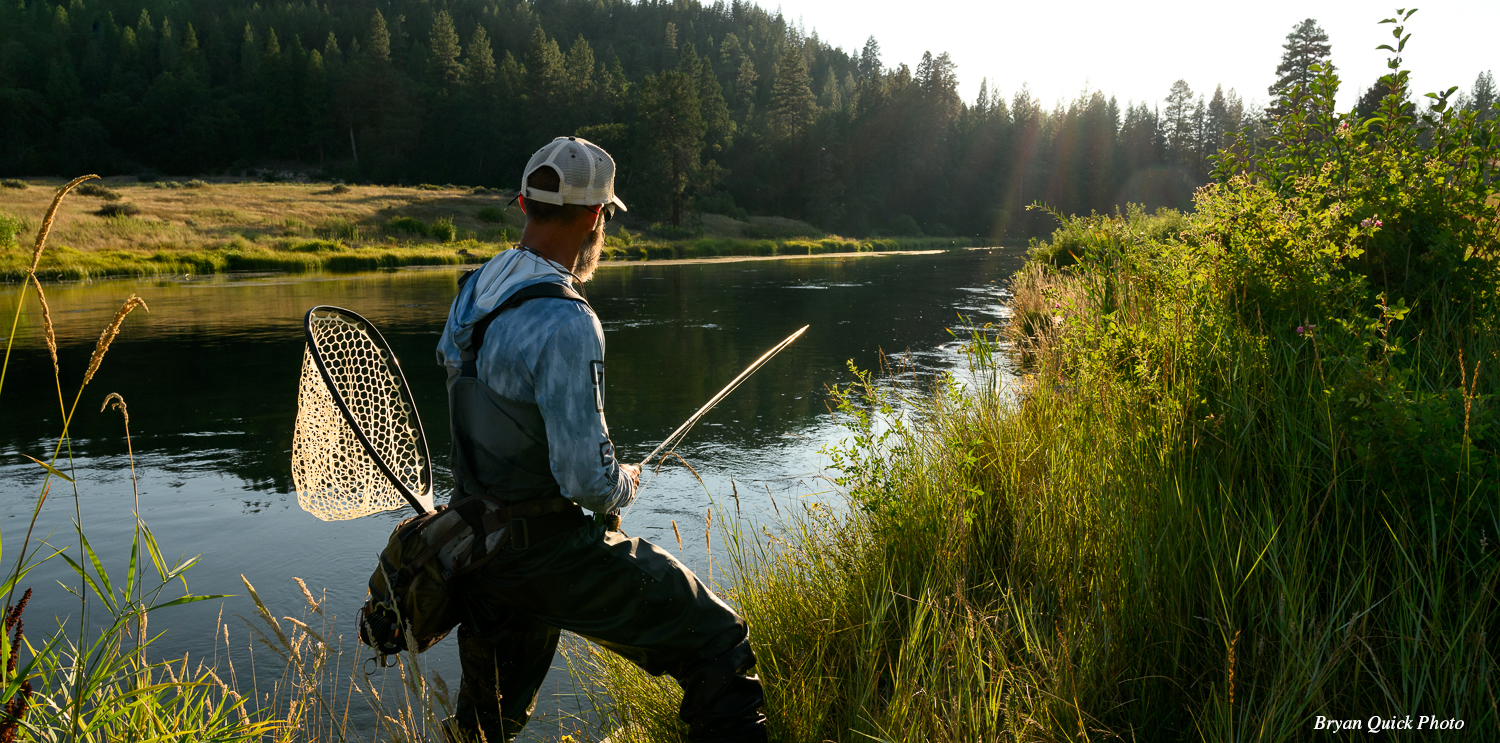Essential Gear: Small Streams
by Bryan Quick
Poking around on a little creek fooling smaller trout is one of my favorite pursuits in late spring through summer. I’m lucky we have plenty of trout waters here in NorCal to hike to and lose myself for a day or two. My fly fishing journey began on the small streams of the western slopes of the Sierra Nevada, where my family camped every summer. All of the gear I acquired back then was with these smaller streams in mind, and it would have been super helpful had I known what would and wouldn’t be useful as I scoured flea markets and garage sale offerings.
Previously we presented a guide to what gear you would consider when you are getting into fly fishing in general. We’ll take a crack here at narrowing that list with a small stream toolkit to allow you to pursue your quarry on smaller streams.
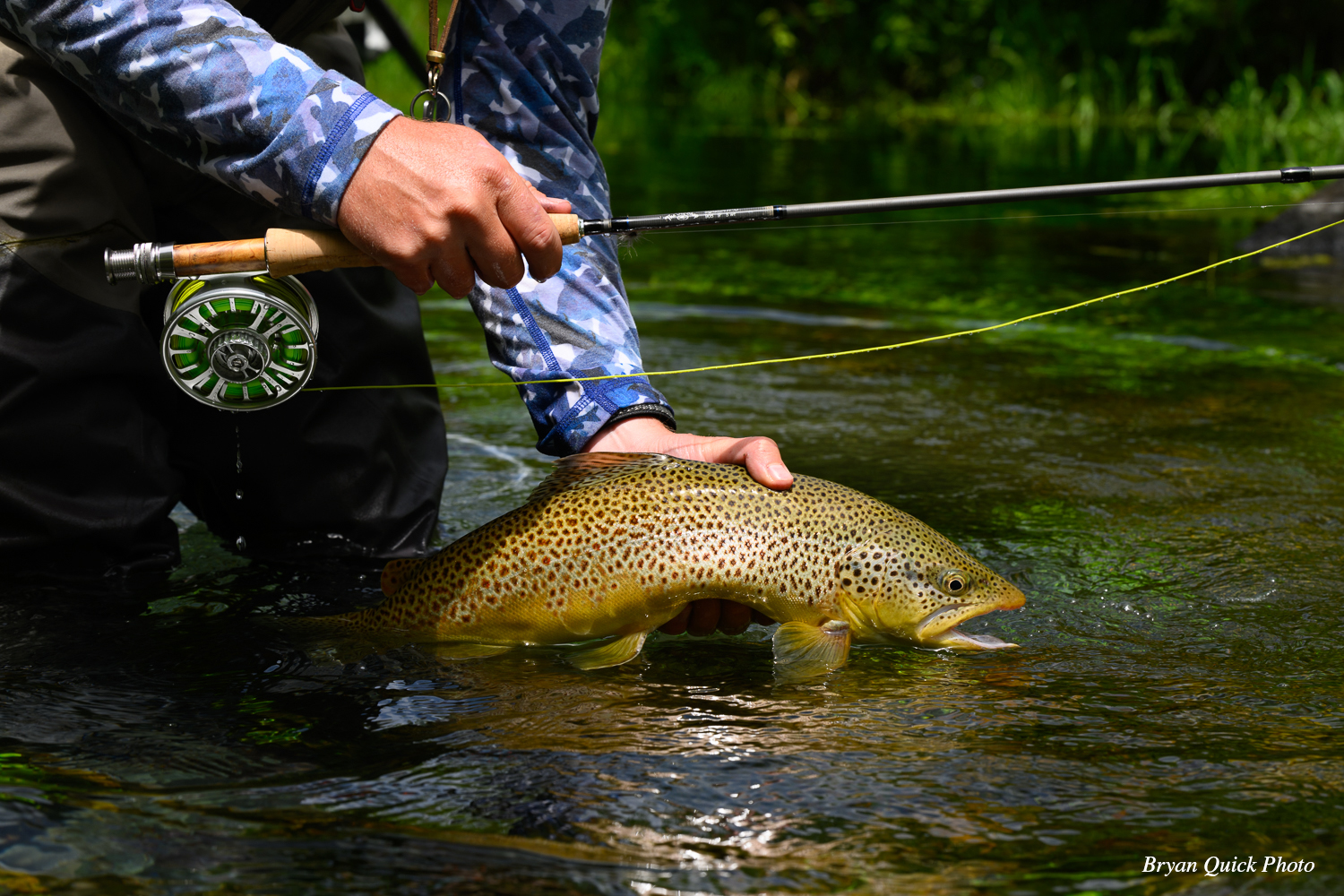
Fly Rod:
This is the fundamental tool you will need and smaller waters call for lighter rods. However, longer rods may be on the table as well. Unquestionably, hands down, the Swiss Army Knife rod on a small stream is a 9’ 5 wt. Coupled with a weight-forward, floating line, you can present dry flies, high stick nymphs, fish dry-dropper rigs, throw some lighter streamers, and even fish an indicator rig to dead drift multiple flies. My preference would be a medium fast or fast action rod, with great feel.
- The Scott Centric and Winston’s Air 2 are excellent rods.
- The Scott G Series and The Fly Shop Signature H20 run a close second.
- To round out your quiver – because who wouldn’t if you have the means – you could add either a 10’ 3 wt Euro-Nymph rod like the Echo Carbon XL or a stiff 9’ seven wt rod like the Sage Igniter with a sinking line to dredge the deeper holes with lead-eyed, bulky streamers.
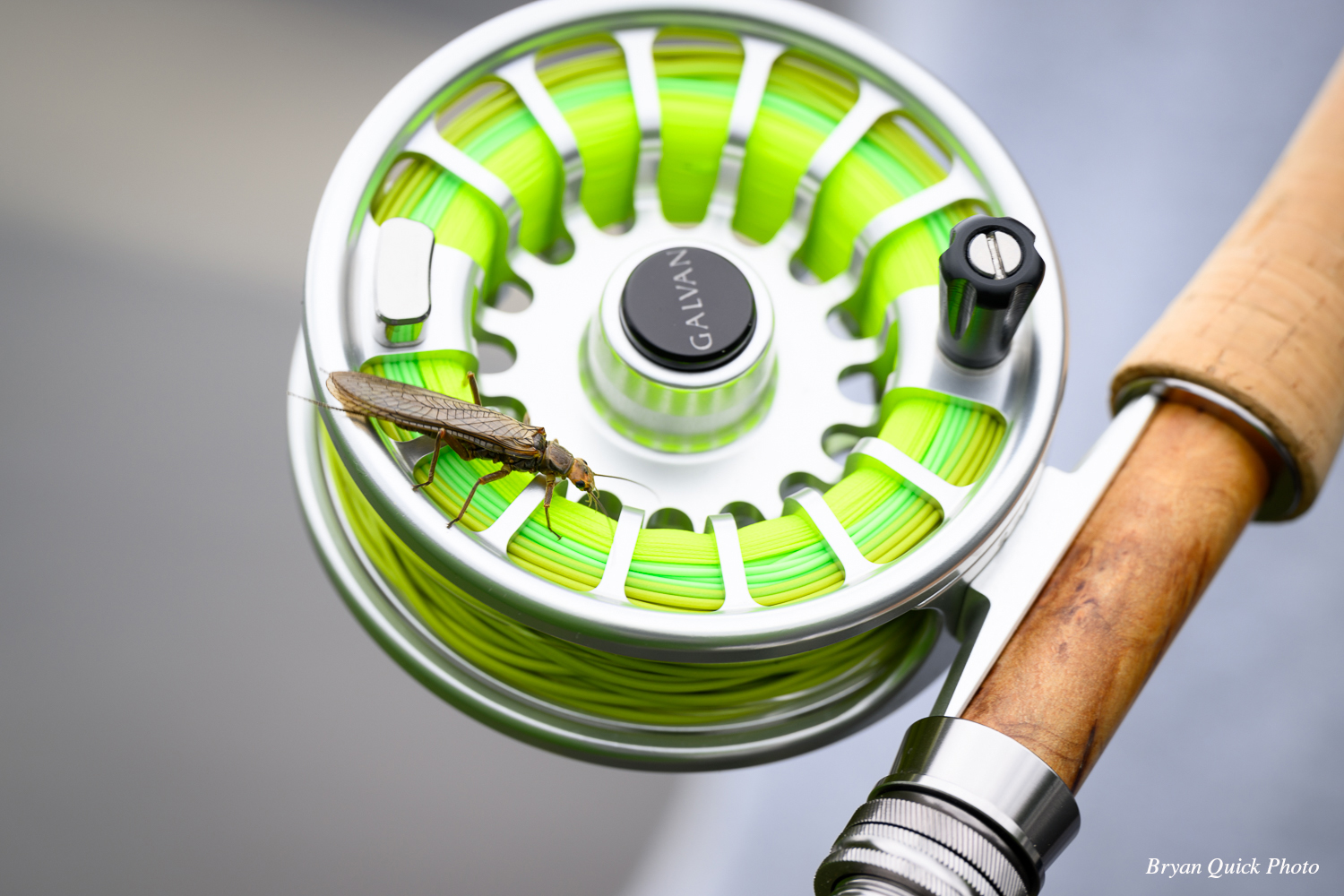
Fly Reel:
A trout reel’s primary purpose is to hold the fly line, and there are a lot of good options for you to choose from. If you are budget-minded, you could save some money here to invest in other areas of your kit. However, make sure you get one with a good drag system. First, there is always the possibility you will hook a super nice fish that isn’t willing to jump into your net. Second, poor drag systems won’t help you manage line if you do need to use it on a fish. Backlashes suck.
- Top of the line, no-holds-barred, Bucket List Reel choice Abel Vaya
- A couple of nice reels with great drag systems that won’t set you back too much are the Ross Animas and the Galvan Torque
- Budget reels that will get the job done are The Fly Shop’s L2A Fly Reel and M2A Fly Reel
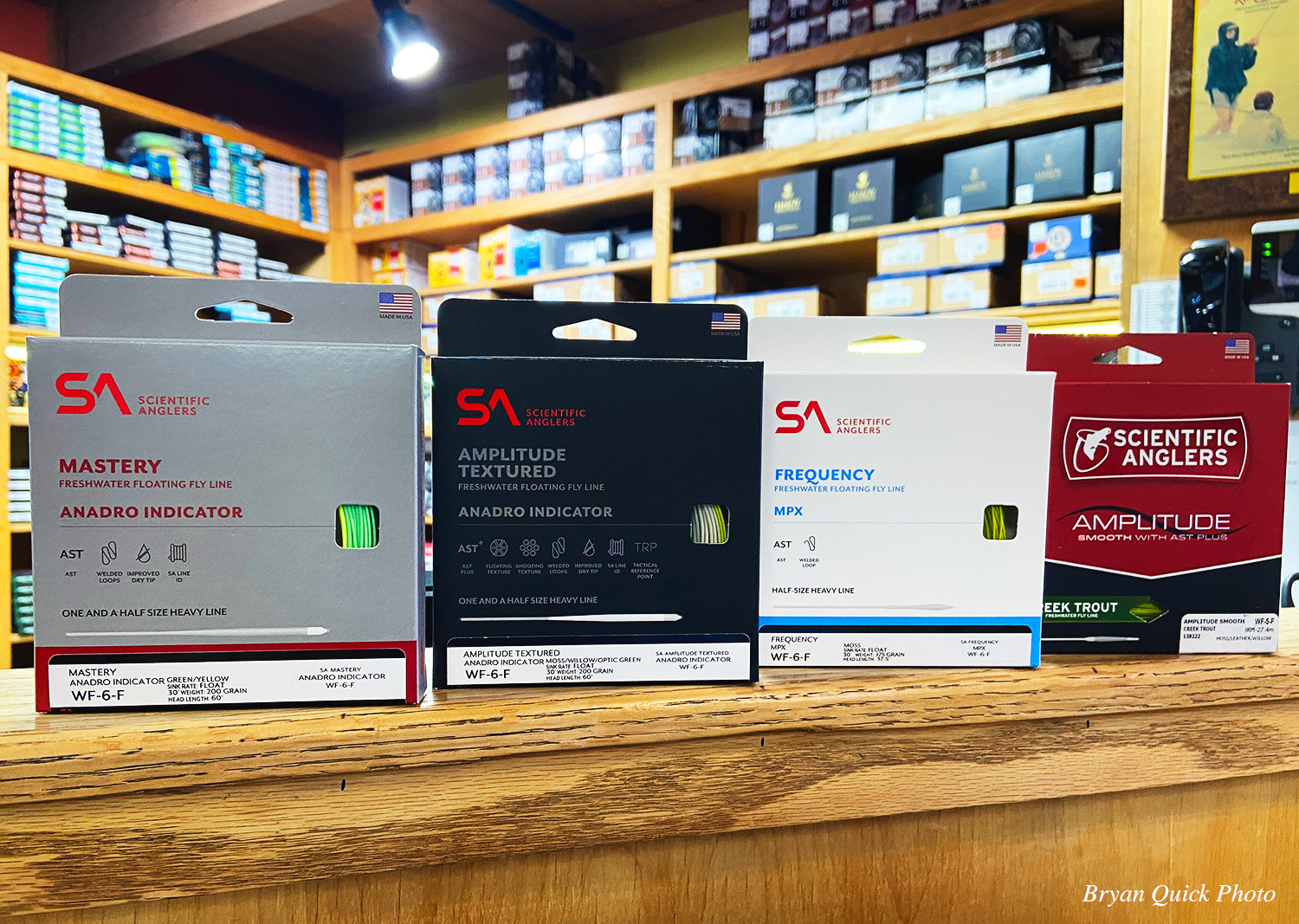
Fly Line:
As I said earlier, a majority of your fishing on smaller water can be done with a weight-forward, floating line, matched to your rod weight.
- The Scientific Anglers Amplitude Textured Infinity Floating Line is the Chef’s Kiss all-rounder – it presents dry flies superbly, shoots line like a greased pig, and is a satisfactory indicator line for small streams
- The Scientific Anglers Mastery Trout Floating Line is a good lower cost line, and some people prefer a line that doesn’t make any noise in the guides.
- If you are only ever going to fish an indicator rig, or if you would like a great line on a spare reel or spool ready for this particular use, a Rio Indicator Floating Line or the Scientific Anglers Anadro Indicator Floating Line are what you will want. These have super long heads ideal for stack mends and will load and roll cast dry-dropper & heavier indicator setups more easily than a conventional weight-forward line.
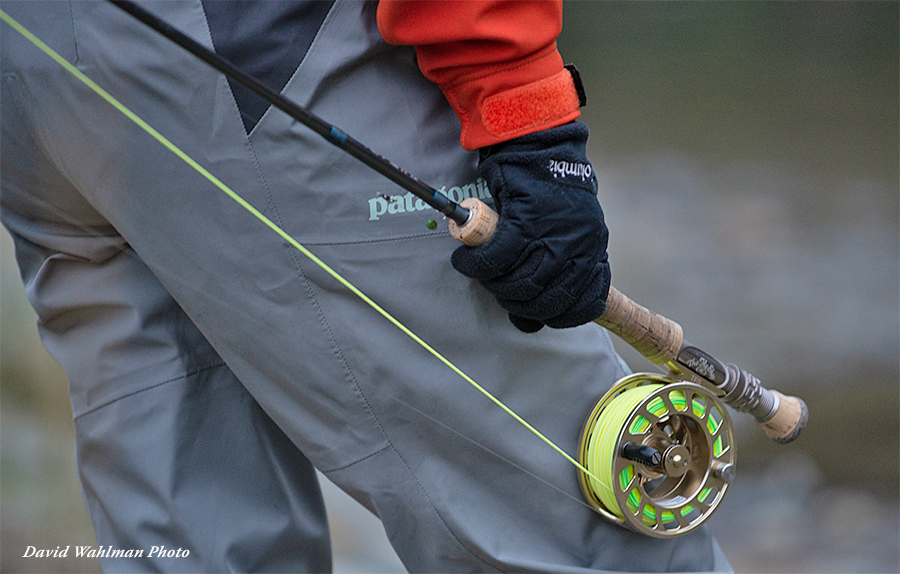
Rod/Reel/Line Packages:
If you would like to simplify things even more, you can purchase an entire outfit that comes with the rod, reel and line. The Fly Shop offers the Fresh H2O outfits with either the L2A or M2A reel options. The cost is a bit more for the L2A, but you get a little better reel. The outfit also comes with a Scientific Anglers Mastery MPX Floating Line, which is a superb all-around freshwater fly line. This is a great way to get started in fly fishing at an affordable price.
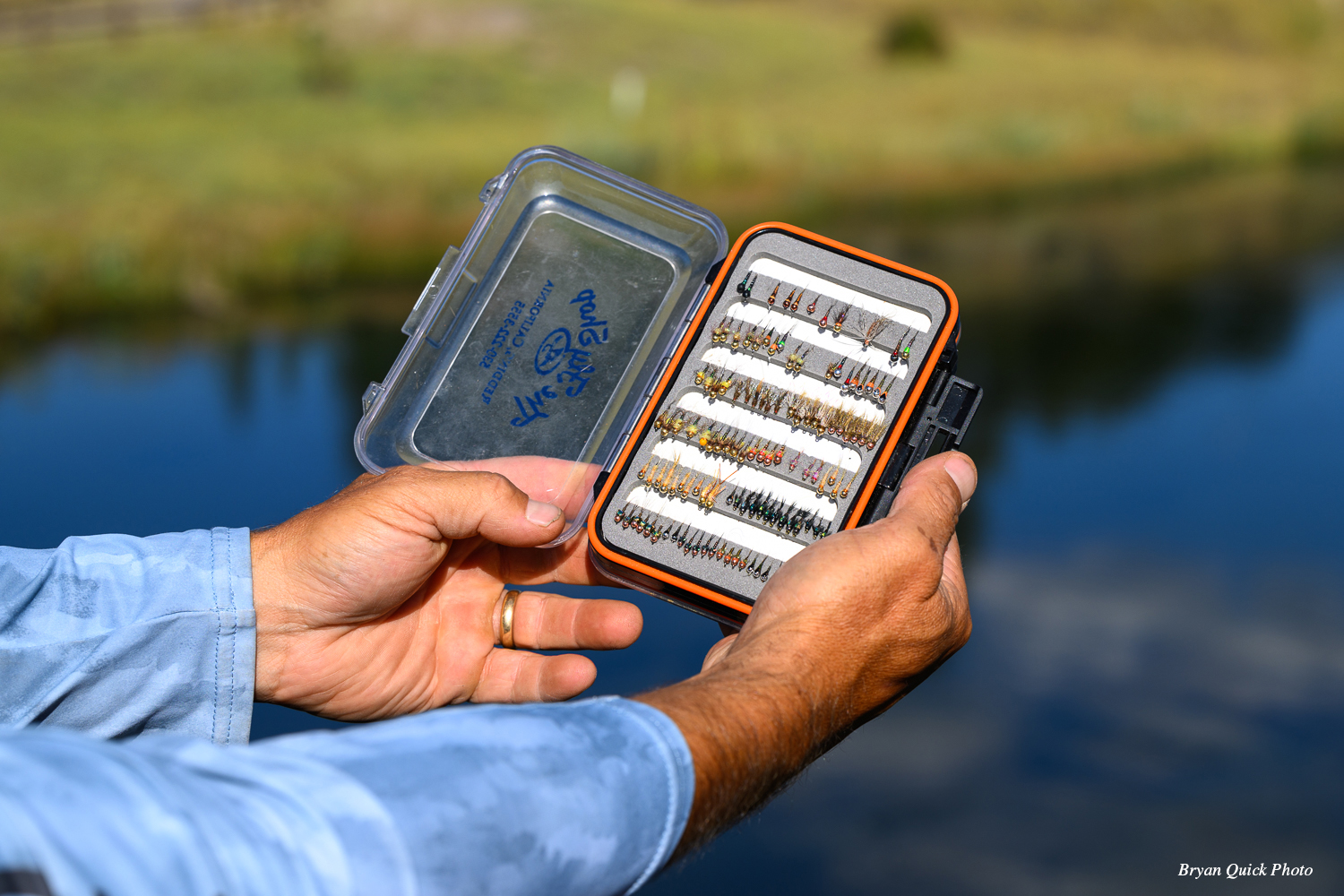
Flies:
Here is where you will need to invest long-term. What the fish are eating today will change tomorrow, but you can make an educated guess on the waters you fish regularly based upon your past experiences, and this is also where visiting a local fly shop can reap big dividends. Having a box stocked with the flies most commonly used will give you confidence when you hit the water. For example, in the spring here in Northern California we commonly have Salmon flies, Pale Morning Duns, Green Drakes, and Golden Stones coming off. Later we will have Golden and Yellow Sally Stoneflies, and Hydropsyche (Spotted Sedge) Caddis emerging. Prevalent in all of our waters are midges and Blue Wing Olives and these can be an important food source for trout no matter what season you find yourself fishing. Your time should be spent researching the nymphs, emergers and dry flies representing the insects you will find on your stream, and this is where a local shop can be a huge help.
As an example, here is a short list of my favorite small stream patterns:
- Pat’s Rubberlegs, brown & black, #6
- Mercer’s Missing Link, dark, #14 & 16
- PMD Challenged, #14 & 16
- Poxyback Green Drake Emerger, #12
- Adams, #12-16
- Fred Gordon’s Prince Nymph (Amberwing)
- Mercer’s CB Micro May in Olive, #16 – 18
- Chubby Chernobyl, brown, #8
- Stimulator, orange & yellow, #6 & 8
- Jigged Green Drake, #12
- Zebra Midge, red & black, #16 & 18
- Cinnamon Fox’s Poopah, #12 & 14
- Bird’s Nest, #12 & 14
- Peaches ‘n Cream, #14 & 16
- Olive Hot Spot Jig, #14 & 16
- Sweet Pea, #16
- Weiss BP Nymph, #18
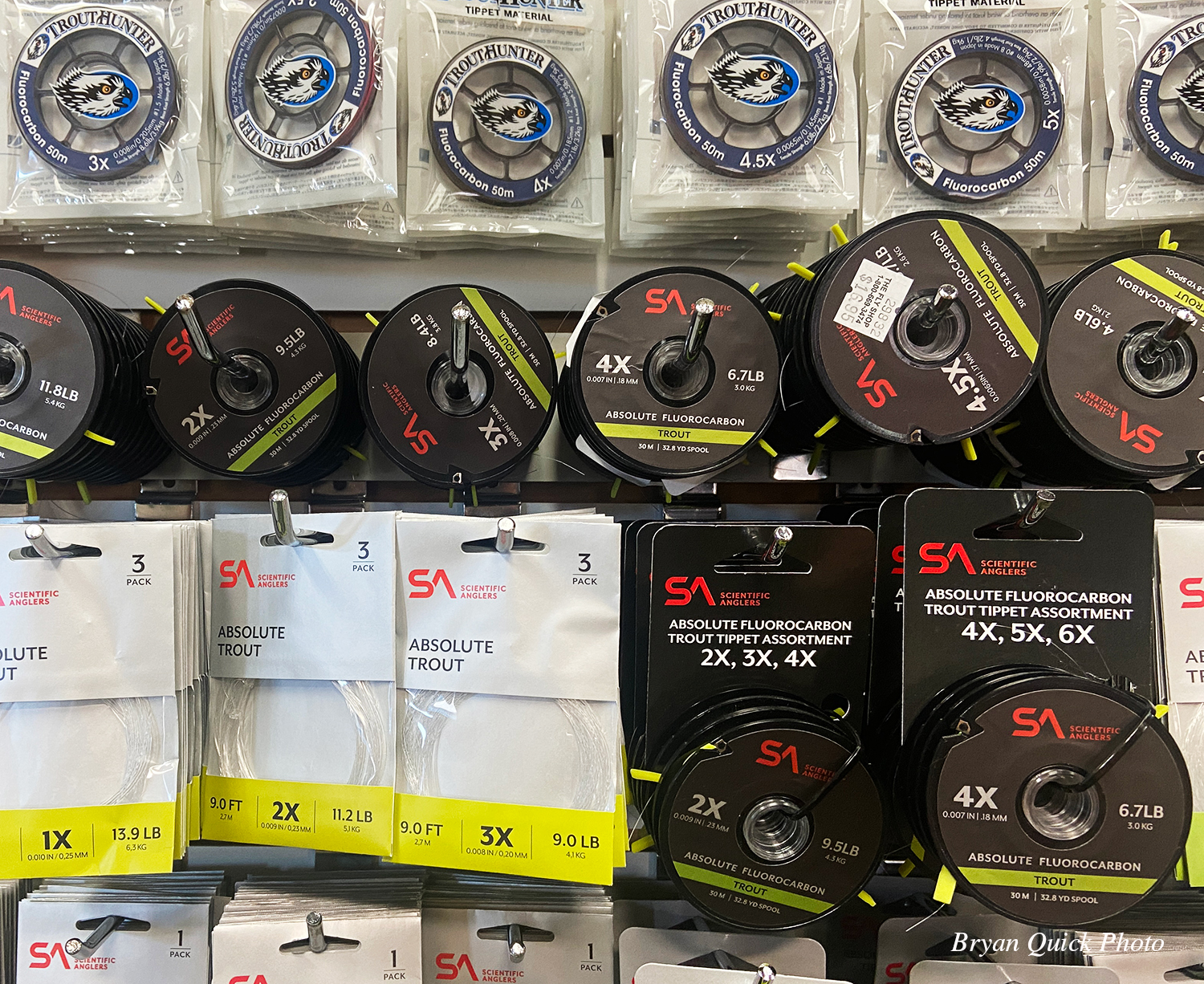
Leader & Tippet Material:
For smaller dry flies, size 12 – 18 on a freestone stream, a 9’ 5x tapered leader will get the job done in most situations. You can also use this leader with a small, detachable indicator to dead drift nymphs. For a dry-dropper rig, or when throwing a larger dry such as a Chubby Chernobyl or large Salmonfly dry, a 7 ½’ 2x or 3x tapered leader will be more appropriate. The added stiffness and shorter length will allow you to turn these flies over more easily. You’ll want spools of 2x through 5x tippet. You can use the 2 or 3x for building better indicator or high sticking rigs. 5x is generally small enough for your smaller dry flies. Fluorocarbon is what I would recommend as it is generally tougher than mono and doesn’t deteriorate in direct sunlight or with age. I must note here, why try to save money on the weakest point in your system? You will regret this when you break your personal best fish off.
- Solid choices you will never regret are Scientific Anglers Absolute Fluorocarbon Tippet and TroutHunter Fluorocarbon Tippet
- Budget-minded choices are Scientific Anglers Absolute Trout and TroutHunter EVO Nylon Tippet

Waders:
Back in the day I didn’t know any better and probably spent most of my time in a hypothermic state; jeans and a pair of hightops were what I had. I know better now, and fortunately there are a lot of wader options out there. I generally wader-up until early June up here in NorCal. Breathable Gore-Tex or Toray waders offer the best comfort when you have to hike in or out of your destination. The Patagonia and Skwala waders are tailored and, in my opinion, much more comfortable if you will be hiking or spending a lot of time in them. Regardless, make sure you actually try on your waders to determine the best fit – tight waders or boots will keep you dry, but cut off your circulation or limit your range of motion and results in agony when the water is cold. Bigger is better in this case and make sure you have room for insulating pants and socks.
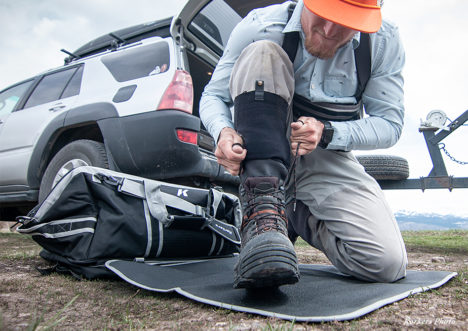
Wading Boots/Shoes:
You can slide around and faceplant only so many times before this purchase climbs to the top of your list. Your wading boots are what anchor you to the bottom of the stream and must endure many soaking & drying cycles. The current lineup of boots are all proven to provide sure traction and comfort, and will last you several seasons. Again, fit here is important. Be certain you size them appropriately, bring your waders and thick socks to a shop and try them on. Jammed up toes and tight arches will bring you to your knees in agony after several hours hiking and wading in cold water. Blood won’t flow to constricted feet.
When the temps soar and the water gets up towards 60℉, I typically wet wade. I’ll ditch the waders and use my trusty pair of neoprene socks. I use the same boots I wear with my waders, and while they are a little large, they work just fine.
As your local regulations allow, we recommend felt and studs, but you’ll want to check the regulations where you like to fish to make sure you are getting the right sole on your boots. Korkers have a great system with interchangeable soles, you can go with straight rubber if you’re feeling risky, or you can lower your deductible and use the felt with studs. And they also have some grippy aluminum offerings with their Triple Threat system.
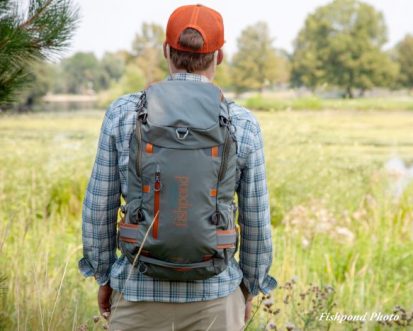
Vests, Packs, and Slings:
Keeping your gear secure, organized, and ready at hand are the three principles I use when selecting a pack. Being waterproof is a good quality too. I used to go with a vest, and if I’m fishing a two-handed rod for steelhead, chances are I’ll have my nippers, some tippet and a spare fly stuck in my hat. But now, I use a waterproof waist pack that suits my needs well, it scales nicely to carry as little or as much as I need for the day, and keeps my camera and phone dry in the event I need to swim across a hole, or lose my balance on a rock.
If you are an avid backpacker and won’t see your truck until past sundown, you will need additional space for water, lunch, and maybe your camera.
- Fishpond’s Thunderhead series of waterproof packs and slings offer several sizes of waterproof options to keep everything dry Submersible Lumbar Pack, Sling, and Backpack
- For a minimalist approach, you can go with the Patagonia Stealth Hip Pack or Fishpond’s Summit Sling 2.0
- Vests are a more traditional option and the Patagonia Stealth Convertible Vest, Simms Freestone Vest, and Fishponds’s Sagebrush Pro Vest will have your bases covered.
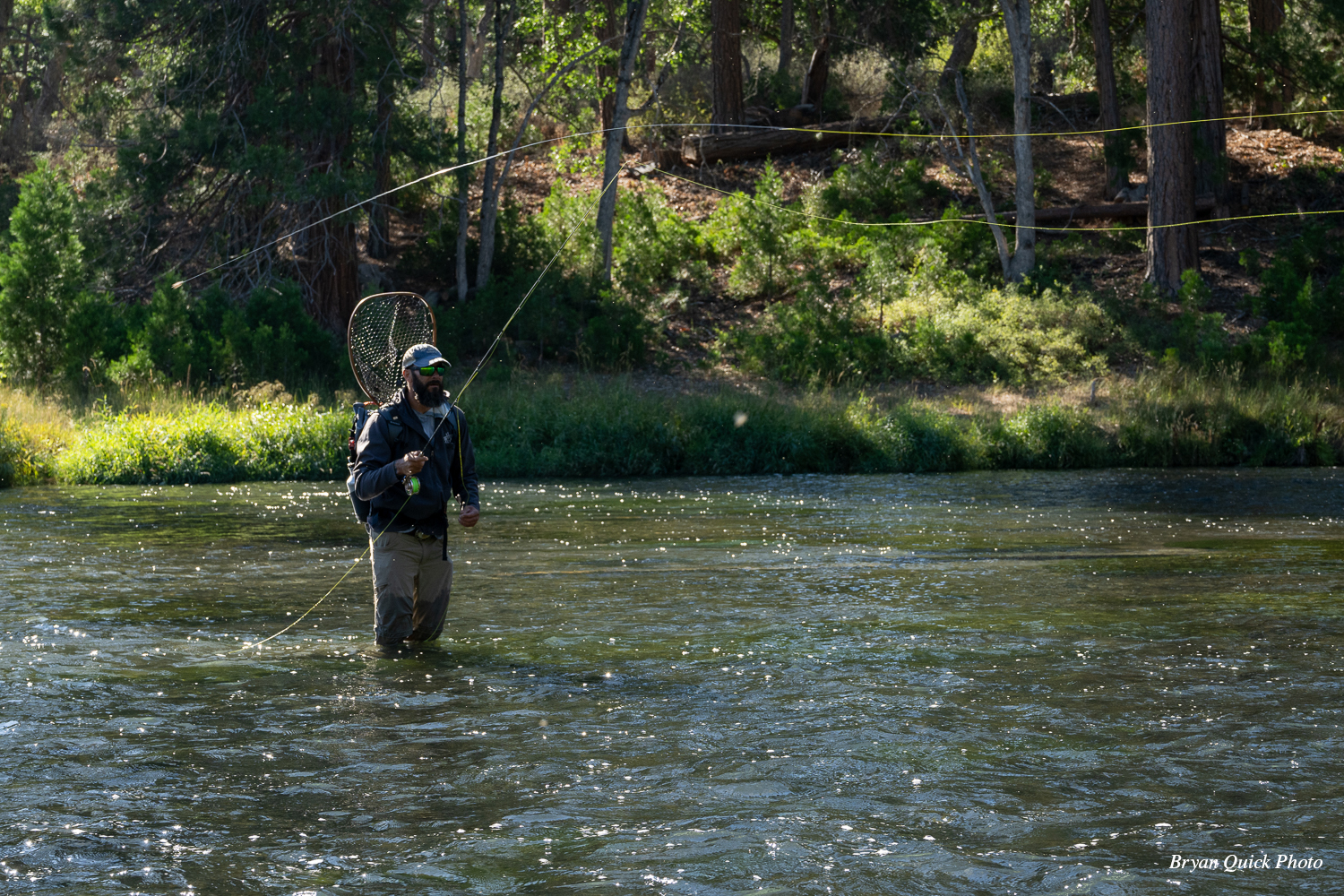
Prioritizing Your Acquisitions
Making the decision on what you need vs. what you want when you’re on a budget can be difficult. A good checklist will often help, and I have a mental checklist I use when I’m heading out the door. And I use the checklist in our Lower 48 Destinations when I’m leaving for a bigger trip, I actually print it out, because who wants to arrive on a guided trip, or pay for a lodge, and figure out how you’re going to wade wet when it’s 50℉ out and raining? I’m offering a shortened version of that checklist in what I would consider priority order:
Must have Items:
▢ Fishing License
▢ Fly Rod(s)
▢ Fly Reel(s) (Appropriate Line/Backing)
▢ Wallet (DL/ID, Cash, Credit Cards)
▢ Polarized Sunglasses * For Safety
▢ Fly boxes (Dries, Streamers, Nymphs)
▢ Leaders ▢ Tippet ▢ Split shot ▢ Floatant
▢ Indicators ▢ Tools (Nippers, Scissors, Hemostats)
▢ Waders ▢ Wading Belt ▢ Wading Boots ▢ Wading Socks (For Wet wading)
▢ Rain Jacket
▢ Water Bottle (Hydro flask)
▢ Quick Dry Shorts/Pants (wet wading) ▢ Light pile or fleece pants ▢ Fishing Hat (Sun Hat)
▢ Bandana or Buff ▢ Stocking cap ▢ Fleece or layering jacket/pullover
▢ Long-sleeve Fishing shirts ▢ Short-sleeved Shirts
▢ SunScreen SPF 30+
▢ Vest / Sling Pack / Butt Pack
▢ Landing Net
Optional Items:
▢ Wading Staff ▢ Lunch ▢ Spare Spools ▢ Spare Lines
▢ Reading Glasses ▢ Extra pair of Sunglasses ▢ Camera, battery charger, storage cards
▢ Tape measure ▢ Insect Repellent ▢ First Aid Kit
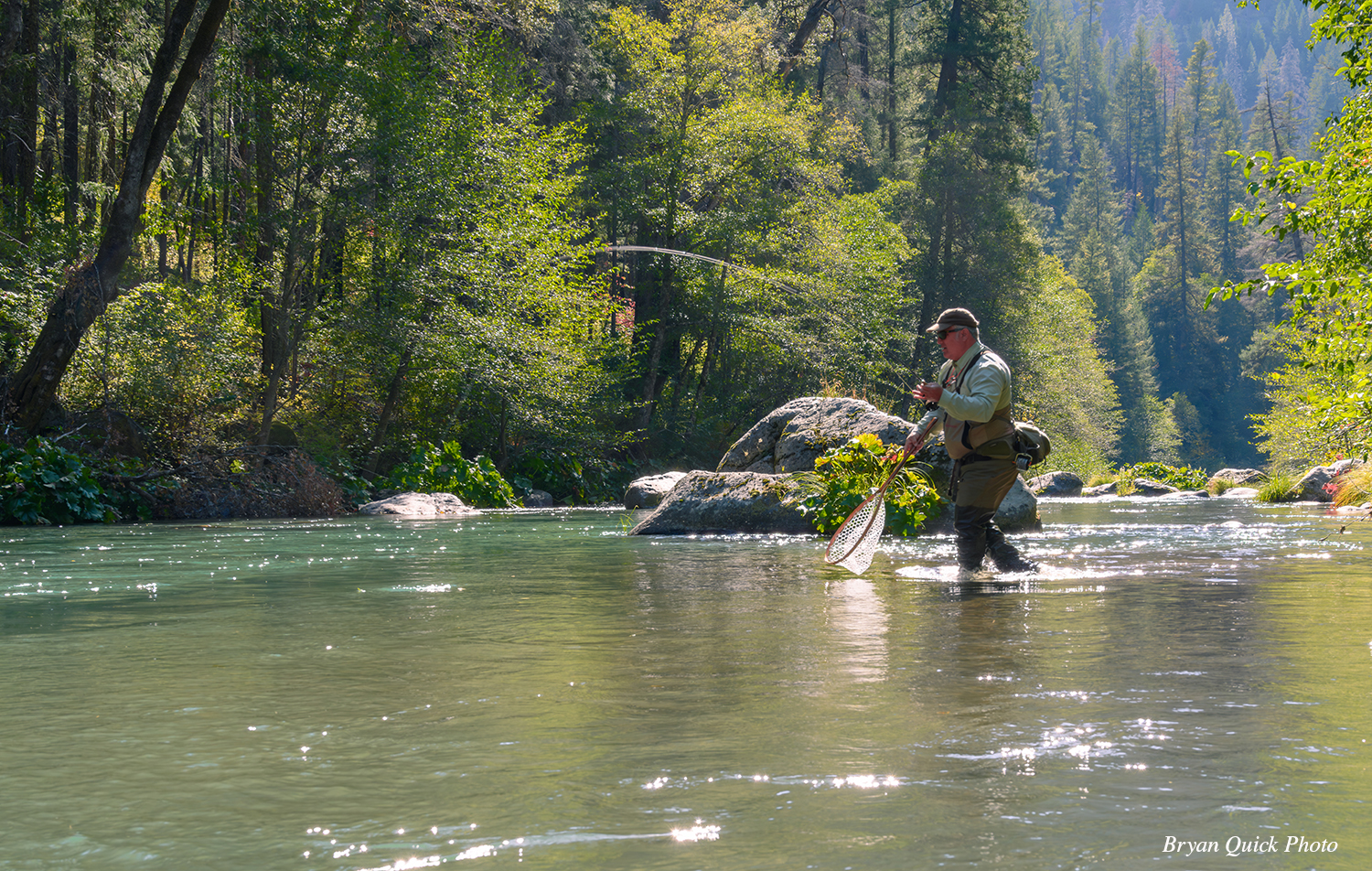
We hope this sheds some light on what is and isn’t gear that you would need for the small stream fly fisher. Whether you are a novice looking to gear up for a quick trip to the Eastern Sierras, are looking to help out a friend or relative angler, or provisioning for a summer Rocky Mountain creek hopping trip, we are happy here at The Fly Shop to provide you with expert advice. May your time on the water be enjoyable and memorable!
Bryan Quick
Director of Outfitters
Guide Service | Private Waters and Schools & Camps
bryan@theflyshop.com | 530-222-3555 | 800-669-3474


